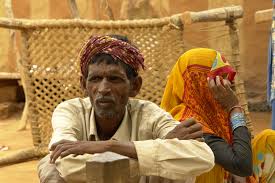Sahariya Tribe:

A remarkable genetic study conducted by researchers revealed a possible genetic link associated with the unusually high rate of tuberculosis (TB) in the Sahariya tribe of central India.
- It is one of the Particularly Vulnerable Tribal Groups (PVTG) and is among the most disadvantaged and vulnerable population groups in the country.
- The six-lakh population (Census 2011) is spread across Madhya Pradesh, Rajasthan, and Uttar Pradesh and sprinkled in a few other states.
- The Sahariya community is also called by the names Seher, Sair, Savar, Saonar, Sahra,
- Residing in communities with non-Sahariya members, the Sahariyas mostly live in a separate area in the village, which is called ‘Seharana’. It is generally a cluster of houses.
- The houses are made of some stone boulders, and the roofing is also made of stone slabs – locally called Patore. In some villages, mud structures are also constructed.
- In villages, ties to the caste system are very strong, and people belonging to the same caste live in close proximity.
- They live in small joint families.
- While the Sahariyas have lost their original language, they speak the local dialects of the regions they inhabit.
- The Sahariya practice their traditional ethnic religions.
- However, they are also aware of Hindu values and use them in defining their own identity.
- They are known for their dance, the Saharia Swang, which is performed during the month of Holi.
- The dance is performed to the beats of the dhol, nagari, and matki.
- It features a male dressed in female attire who dances around the male performers.
- Predominantly forest dwellers, they live in remote locations and make their living from forest produce, additionally cultivating small plots of land and work as landless labourers.
- They are particularly skilled in making catechu from khair trees.
- To supplement their meagre income, seasonal migration is very common in the tribe.




